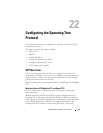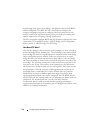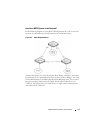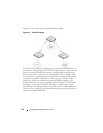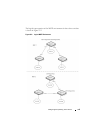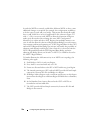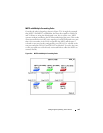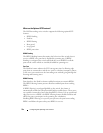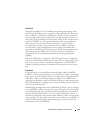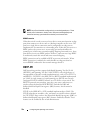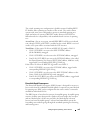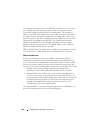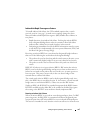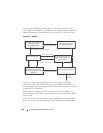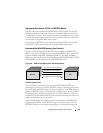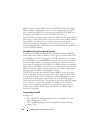
Configuring the Spanning Tree Protocol 723
Root Guard
Root guard is another way of controlling the spanning-tree topology other
than setting the bridge priority or path costs. Root guard ensures that a port
does not become a root port or a blocked port. When a switch is elected as
the root bridge, all ports are assigned roles as designated ports unless two or
more ports of the root bridge are connected in a loop. If the switch receives a
superior STP BPDU on a root-guard enabled port, the root guard feature
moves the port to a root-inconsistent spanning-tree state. No traffic is
forwarded across the port, but it continues to receive BPDUs, discards
received traffic, and is included in the active topology. Essentially, this is
equivalent to the IEEE 802.1D listening state. By not transitioning the port
on which the superior BPDU has been received to the forwarding state
(designated role), root guard helps maintain the existing spanning-tree
topology.
When the STP mode is configured as MSTP, the port may be a designated
port in one MSTI and an alternate port in the CIST, etc. Root guard is a per
port (not a per port instance command) configuration, so all the MSTP
instances this port participates in should not be expected to take on a root
role.
Loop Guard
Loop guard protects a network from forwarding loops induced by BPDU
packet loss. The reasons for failing to receive packets are numerous, including
heavy traffic, software problems, incorrect configuration, and unidirectional
link failure. When a non-designated port no longer receives BPDUs, the
spanning tree algorithm considers the link to be loop free and transitions the
link from blocking to forwarding. Once in the forwarding state, the link may
create a loop in the network.
Enabling loop guard prevents such accidental loops. When a port is no longer
receiving BPDUs and the max age timer expires, the port is moved to a
loop-
inconsistent blocking state
. In the loop-inconsistent blocking state, traffic is
not forwarded so the port behaves as if it is in the blocking state; that is, it
discards received traffic, does not learn MAC addresses, and is not part of the
active topology. The port will remain in this state until it receives a BPDU. It
will then transition through the normal spanning tree states based on the
information in the received BPDU.



